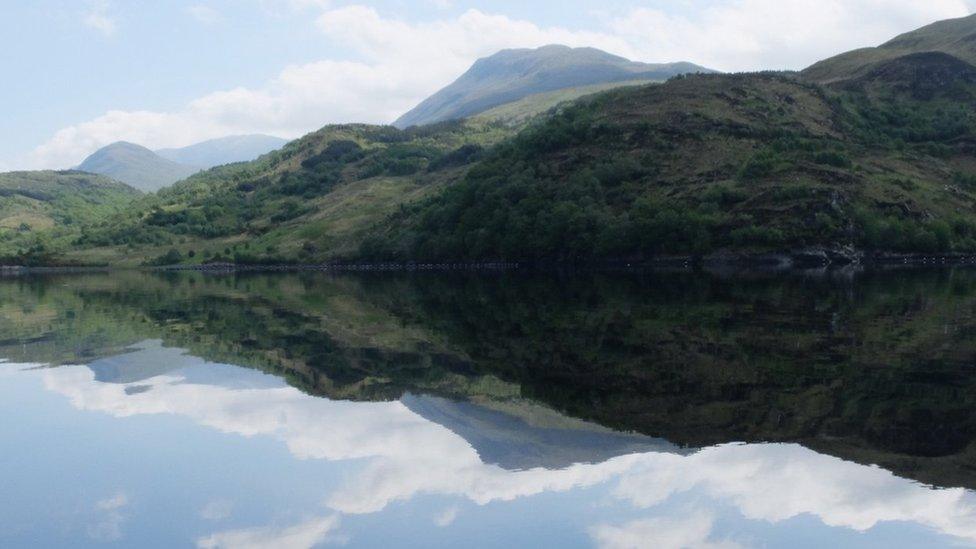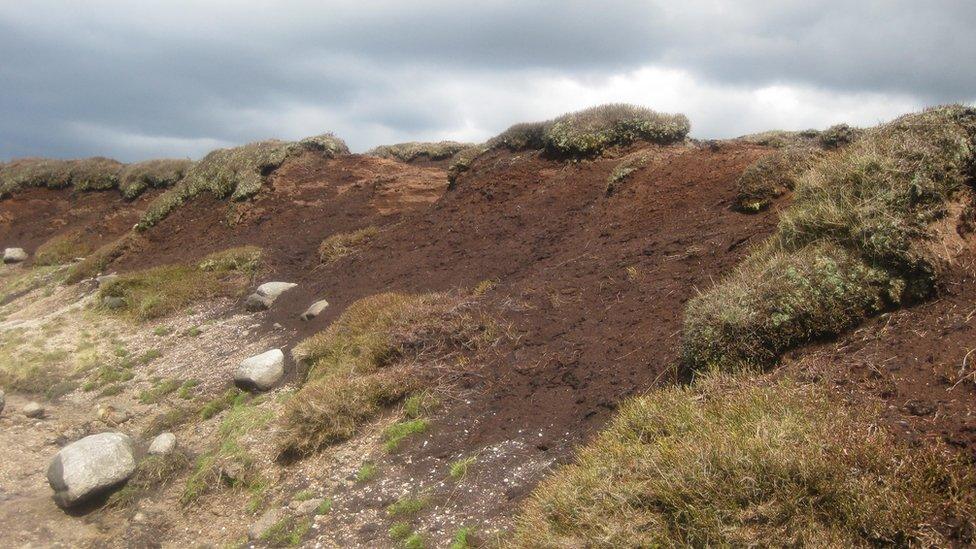Scottish lochs 'important stores' of carbon
- Published
- comments

University of St Andrews researchers studied Loch Etive
Scotland's sea lochs play an important role in storing carbon which would otherwise contribute to climate change, scientists have suggested.
Using samples from Loch Etive, near Oban, researchers calculated that a square metre of sediment contains more carbon than peatlands.
Protecting carbon stores is important because when it is disturbed it can release greenhouse gases.
The study was carried out by researchers at St Andrews University.
While millions is spent on enhancing and restoring carbon-stores in peat moors, sea lochs are afforded relatively little protection from activities like dredging and the researchers said that needed to change.
Research fellow Craig Smeaton said: "Scottish sea lochs contain a large amount of carbon.
"It's mainly been forgotten about over the last decade in comparison to the Scottish peatlands.
"About a third of the carbon held in the peatlands are held in the sea lochs but when you think about it as an area difference the sea lochs contain far more carbon per metre or kilometre squared. So they are storing more carbon over a smaller area."
'Sustainable food production'
The Scottish government is currently finalising its Climate Change Plan which sets out how it intends to address global temperature rises over the next 15 years.
But a draft version, published in January 2017, contained no policies to protect sediment deposits in sea lochs.
The sediment is carried from the landscape through rivers and burns into lochs. Until recently it had been assumed the carbon then disappeared into the sea.
But deep troughs in the sea lochs provide huge areas for the sediment to settle and be stored.
Mr Smeaton added: "The coastal region, and fjords and sea lochs in particular, are giving this carbon a second chance to be captured. So it's not all lost.
"There is a second reservoir of carbon that we've totally forgotten about. But it is there and it is large and important."

Previously concerns have been foucsed on drying out peatlands releasing carbon into the atmosphere
About 640 million tonnes of carbon is now estimated to exist in the top 111 Scottish sea lochs. Scottish peats have been estimated to hold 1,600 million tonnes.
Last year the Scottish government pledged £8m to restore damaged moors where peat left exposed can be dried out by the sun. This then releases carbon into the atmosphere.
The biggest threat to sea lochs is thought to be from dredging, where fishing gear is dragged along the sea bed to scoop-up scallops.
This practice is banned in some areas through a system of Marine Protected Areas (MPAs) but only for the benefit of marine features, like reefs, and individual species.
Bertie Armstrong, chief executive of the Scottish Fishermen's Federation, said: "This is an interesting preliminary scientific paper on carbon absorption and retention in Scottish fjords.
"The potential effects of physical disturbance is mentioned but there is no attempt in this early work to define or quantify it. Before anyone can make a sensibly evidenced statement, that is now required.
"The Scottish lochs are a wonderful asset for a number of reasons, not the least of which is their contribution to sustainable food production."
'Blue carbon'
Prof John Baxter, principal marine advisor for Scottish Natural Heritage, said: "If that carbon was in the atmosphere it would be contributing to climate change, global warming.
"But also that carbon would be being absorbed by the sea again which would be contributing to another major issue that we have which is ocean acidification.
"If it is mobilised by being dredged or put back into the water column then some of that will go back into the atmosphere.
"It's really important that we recognise that these stores are there and that we do everything we can to protect them, to maintain those stores."
Prof Baxter said marine areas provided an important protection against climate change with what is called "blue carbon" where ecosystems such as seagrass meadows and saltmarshes soak up carbon.
He added: "It plays a huge role and it is important that we do recognise it and acknowledge it.
"But we need to find out more and do more research."
Protect ecosystems
Inshore dredging has been under scrutiny since a rare flame shell reef was damaged in Loch Carron last year.
Last week, BBC Scotland revealed that illegal scallop dredging had been taking place in a Marine Protected Area in the Firth of Lorn.
The Scottish government said Scotland was "at the forefront of the global fight against climate change".
A spokeswoman added: "Many of the key habitats and species found in sea lochs identified by research as being important for blue carbon are protected by policies under the National Marine Plan, which require decision makers to consider climate change mitigation and adaptation.
"Several are also safeguarded within Scotland's Marine Protected Area Network. This provides the potential to protect these important marine ecosystems to ensure they continue to capture and store carbon.
"We continue to invest in research to improve our understanding of blue carbon, as outlined in our forthcoming Climate Change Plan."